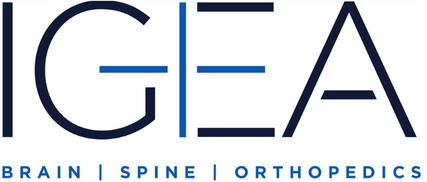ENDOSCOPIC THIRD VENTRICULOSTOMY (ETV) IN NEW JERSEY & NEW YORK
WHAT IS ENDOSCOPIC THIRD VENTRICULOSTOMY (ETV)?
Endoscopic Third Ventriculostomy (ETV) is a specialized procedure for the treatment of hydrocephalus. By creating a small opening in the base of a ventricle, neurosurgeons allow cerebrospinal fluid to drain away from the area of build-up. The excess fluid is redirected into the interpeduncular cistern, where it is naturally reabsorbed by the body. Because ETV works by creating a bypass, it is only effective for hydrocephalus caused by a tumor or other obstruction.
ETV exists as an alternative to a shunt and may prevent patients from having to undergo successive procedures. While shunts drain CSF to other areas of the body, ETV keeps it within the brain and spinal cord. ETV is also known to have fewer complications than shunting, with less risk of blockage, infection, shunt failure, or over-draining.
THE ETV PROCESS
Before your procedure, discuss any necessary preparations with your doctor. You may be asked to stop certain medications, including blood thinners and dietary supplements, as well as cease alcohol use and smoking.
On the day of the surgery, you or your child will be placed under general anesthesia. Our neurosurgeons will use state-of-the-art imaging technology called an endoscope. This is a fiberoptic microscope between two and five millimeters long and is used to ensure neurosurgeons have a complete view of the brain and spinal cord. With the endoscope’s aid, surgeons create a tiny burr hole through the membrane at the third ventricle’s base. They then monitor the cerebrospinal fluid as it drains.
After the procedure, you can expect a short hospital stay while we monitor your recovery. We will discharge you when we are certain the procedure was a success, and our team will then work with you to facilitate a smooth, safe return to normal activities.
CEREBROSPINAL FLUID (CSF)
Cerebrospinal fluid (CSF) is a clear liquid surrounding the spinal cord and brain. It hydrates, delivers nutrients, removes waste, and acts as a shock absorber to protect the brain from trauma. Some conditions can cause an excess of CSF to build up, collectively known as hydrocephalus. In New Jersey and New York, IGEA Brain, Spine & Orthopedics specializes in endoscopic third ventriculostomy (ETV) surgery, which relieves pressure in the brain caused by hydrocephalus.
SYMPTOMS AND CAUSES OF HYDROCEPHALUS
Hydrocephalus, which means water of the brain, is common in children, though it can also appear in adults. As CSF builds up, it places pressure on the brain and obstructs normal function. This can be identified through symptoms such as:
- Headaches
- Nausea and vomiting
- Excessive drowsiness
- Abnormal head shape with swollen veins or bulging soft spots (in babies)
- Balance difficulties and sudden falls
- Behavioral and personality changes
- Memory loss
- Seizures
Hydrocephalus may have any number of causes. Some cases are congenital, while others result from an injury, trauma, or stroke. Still, others are caused by an obstruction to the flow of CSF. Regardless of the cause, the intense pressure from hydrocephalus may have long-term consequences, making prompt medical treatment essential.
LEARN MORE ABOUT ETV SURGERY
If you or your loved one struggles with hydrocephalus, find relief at IGEA Brain, Spine & Orthopedics, which has convenient locations in New Jersey and New York. We are home to an experienced team of board-certified neurosurgeons who serve the tri-state area with cutting-edge treatments and compassionate care. To learn more or request an appointment, contact us today.

